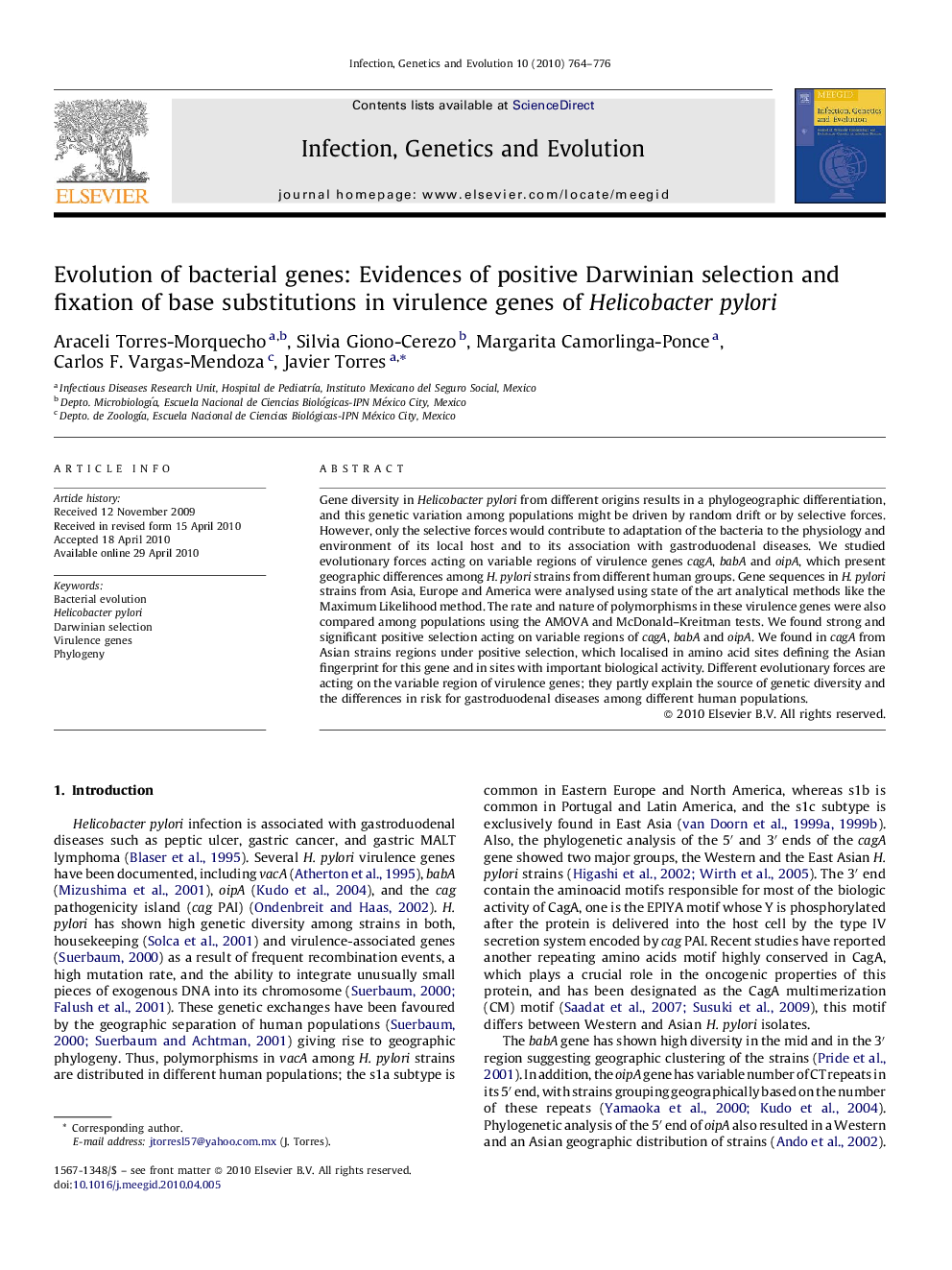| Article ID | Journal | Published Year | Pages | File Type |
|---|---|---|---|---|
| 2823173 | Infection, Genetics and Evolution | 2010 | 13 Pages |
Gene diversity in Helicobacter pylori from different origins results in a phylogeographic differentiation, and this genetic variation among populations might be driven by random drift or by selective forces. However, only the selective forces would contribute to adaptation of the bacteria to the physiology and environment of its local host and to its association with gastroduodenal diseases. We studied evolutionary forces acting on variable regions of virulence genes cagA, babA and oipA, which present geographic differences among H. pylori strains from different human groups. Gene sequences in H. pylori strains from Asia, Europe and America were analysed using state of the art analytical methods like the Maximum Likelihood method. The rate and nature of polymorphisms in these virulence genes were also compared among populations using the AMOVA and McDonald–Kreitman tests. We found strong and significant positive selection acting on variable regions of cagA, babA and oipA. We found in cagA from Asian strains regions under positive selection, which localised in amino acid sites defining the Asian fingerprint for this gene and in sites with important biological activity. Different evolutionary forces are acting on the variable region of virulence genes; they partly explain the source of genetic diversity and the differences in risk for gastroduodenal diseases among different human populations.
